Abstract
In Japanese agriculture, the latest data on cultivated land area and leased land reveal some interesting features. According to statistics from 2022, the area of cultivated land used for agricultural crops is divided into ordinary fields and the total area used for greenhouse vegetable cultivation. Ordinary fields are used for growing traditional vegetables and grains, while the total area used for greenhouse vegetable cultivation accommodates the cultivation of vegetables in facilities such as greenhouses and houses. In particular, there are 14,200 hectares of large-scale greenhouse vegetable cultivation areas of over 50,000 m², and this sector is showing signs of expansion. The background to this trend is the increase in demand in urban areas and the need for a stable supply across seasons. Technological innovations in indoor cultivation have increased productivity and improved quality control. On the other hand, while the area of ordinary farmland has remained relatively stable, it is facing challenges such as the aging of farmers and a lack of successors. This calls for efforts to balance agricultural modernization with sustainability. Across the total area of cultivated land, there are a variety of management styles, from small-scale to large-scale, and characteristics differ from region to region. However, overall there is an increase in abandoned cultivated land and a need to improve the multi-functionality of farmland. In the future, it is expected that the introduction of new technology and support for young farmers will become more important, and efforts will be made to develop sustainable agriculture.
Cultivated land area
Recent trends in agricultural land area under management in Japan are interesting. Of particular interest from 2019 to 2022 will be the change in the area of greenhouse vegetable cultivation. During this period, the largest area was recorded in 2020 at 1,740 hectares, which is within the range of 10,000-20,000 m² of greenhouse vegetable planting area. The sector represents a 14.8% decrease from its peak. There are several factors behind this characteristic. One is changing market demand, and in particular indoor vegetable cultivation has grown to meet out-of-season supplies and improve quality control. However, in recent years, rising production costs and securing labor have become issues, and it is possible that some farmers have reduced the area of their greenhouse vegetable cultivation. On the other hand, the cultivated land area of ordinary farmland has remained relatively stable and traditional crops continue to be cultivated, but management and maintenance of these crops have become an issue due to the aging of the population and issues with finding successors. In some regions, there has been an increase in abandoned farmland, and there is a need to utilize this land to improve its multi-functionality. In the future, there will be an emphasis on technological innovation and the promotion of sustainable agriculture, with particular emphasis on supporting small-scale farmers and implementing management strategies that take advantage of the characteristics of each region. It is hoped that efficient, environmentally friendly agriculture will develop in response to agricultural policy reviews and market changes.
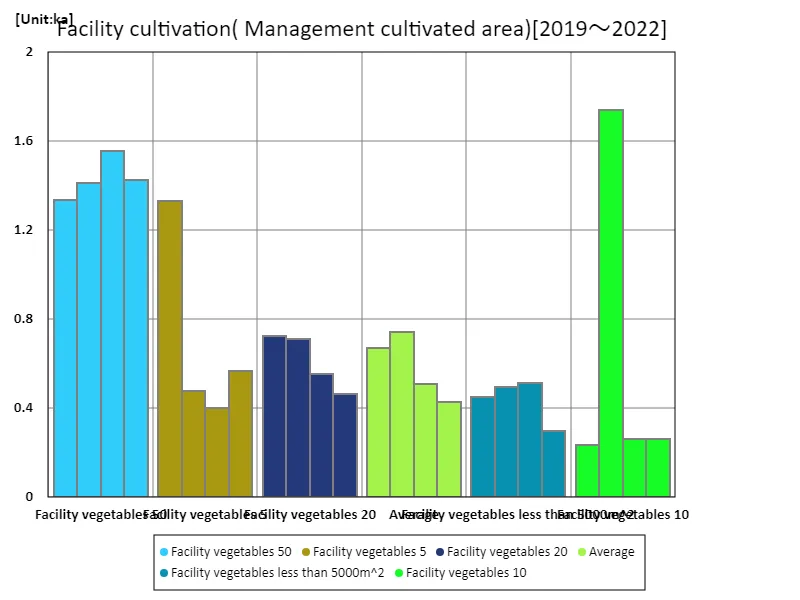

The maximum is 1.74ka[2020] of Facility vegetables 10, and the current value is about 14.8%
Ordinary field
The characteristics and trends based on the latest data on ordinary farmland in Japanese agriculture are interesting. According to statistics for 2022, the maximum total area of ordinary fields is 794,000 hectares, and the average area is 247,000 hectares. The total area of the whole reaches 1.48 million hectares. Ordinary fields are mainly used for cultivating traditional vegetables and grains, and different characteristics can be seen depending on the region. In particular, in areas with many large-scale farms, although the problem has been resolved, there is a tendency for abandoned farmland to increase due to the aging of the population and a lack of successors.
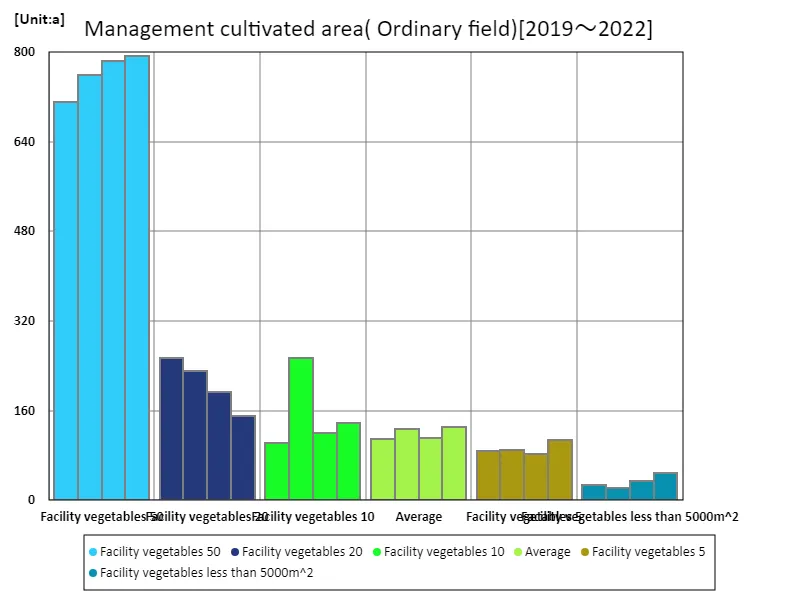

The maximum is the latest one, 794a of Facility vegetables 50
Borrowed land
The latest data from 2022 sheds light on the characteristics and trends of leased land in Japanese agriculture. Rented land refers to cases where farmers rent farmland to farm, and the area and method of use vary widely. The amount of leased land with a greenhouse vegetable cultivation area ranging from 10,000 to 20,000 m² was the highest overall, reaching 1.65 thousand hectares. There are several factors behind this trend. One is the increase in agricultural activities in peri-urban areas. In urban areas, awareness of food safety and local production for local consumption is growing, and there is a demand for agricultural products that are tailored to local characteristics. In addition, technological innovations have made vegetable cultivation within facilities more efficient, encouraging small-scale farmers to actively use rented land. On the other hand, there are challenges in managing and maintaining the leased land. Key issues include the terms of contracts with farmland owners, local regulations, and risk management associated with longer-term land lease agreements. Additionally, issues regarding land prices and fund raising are also major challenges for farmers. In the future, there will be a need to promote sustainable agriculture. This includes proper use and management of farmland, introducing more advanced technologies and supporting young farmers. It is expected that policy support will contribute to the stabilization and expansion of agricultural production, and also lead to the revitalization of the local economy.
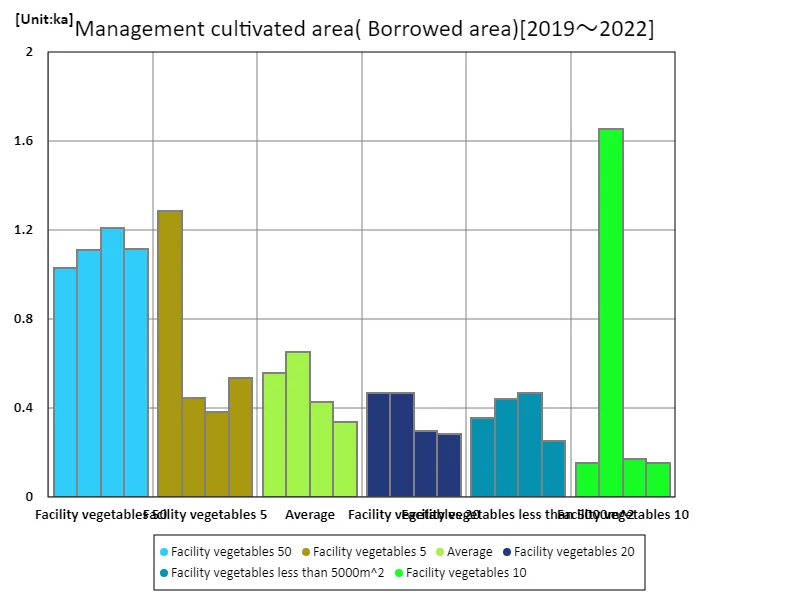

The maximum is 1.65ka[2020] of Facility vegetables 10, and the current value is about 9.36%
Total area cultivated under greenhouses for vegetables
Based on the latest data from 2022, several characteristics and trends become clear regarding the total area of greenhouse vegetable cultivation in Japan. The maximum total area of greenhouse vegetable cultivation is 120,000 m², the average is 31,300 m², and the total is 188,000 m². There are several factors behind the expansion of greenhouse vegetable growing area. One is the increase in production in suburban and densely populated areas. This has led to a demand for food safety and the establishment of local brands, and on-site production is considered effective. In addition, indoor cultivation is less affected by climate and seasons and quality control is easy, making it easier to meet consumer needs. Producing greenhouse vegetables requires advanced technology, and automation and the introduction of IoT are progressing. This has resulted in increased productivity and a more efficient use of the workforce. It is also attracting attention as a market that is easy for small-scale farmers and urban farmers to enter. On the other hand, there are challenges to expanding indoor cultivation. These include rising operating costs, increased energy consumption, and facility maintenance. To address these challenges, there is a need to develop sustainable technologies and reduce energy consumption. In the future, it is expected that there will be a diversification of facilities that utilize local resources and that a variety of crops that suit consumer tastes will be cultivated. In terms of policy, the promotion of greenhouse vegetables and technical support are also emphasized, with the aim of improving agricultural sustainability and market competitiveness.
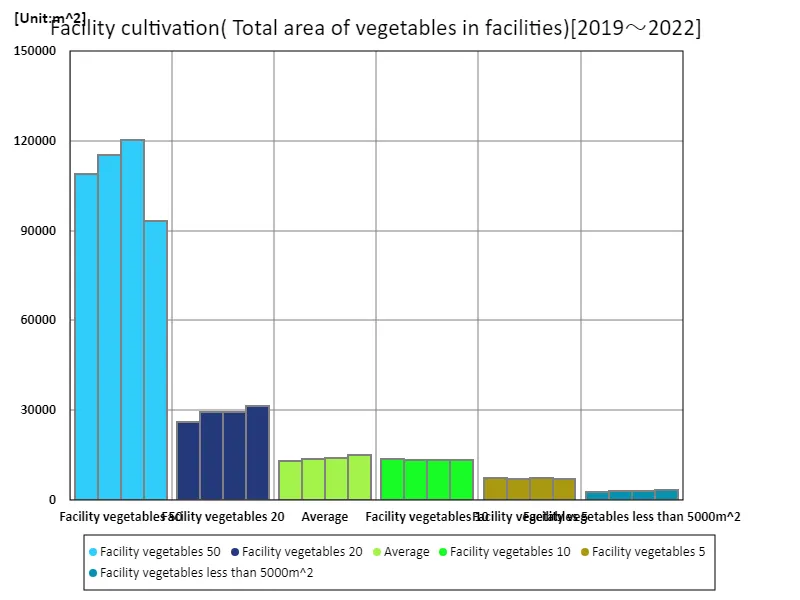

The maximum is 120000m^2[2021] of Facility vegetables 50, and the current value is about 77.5%^2
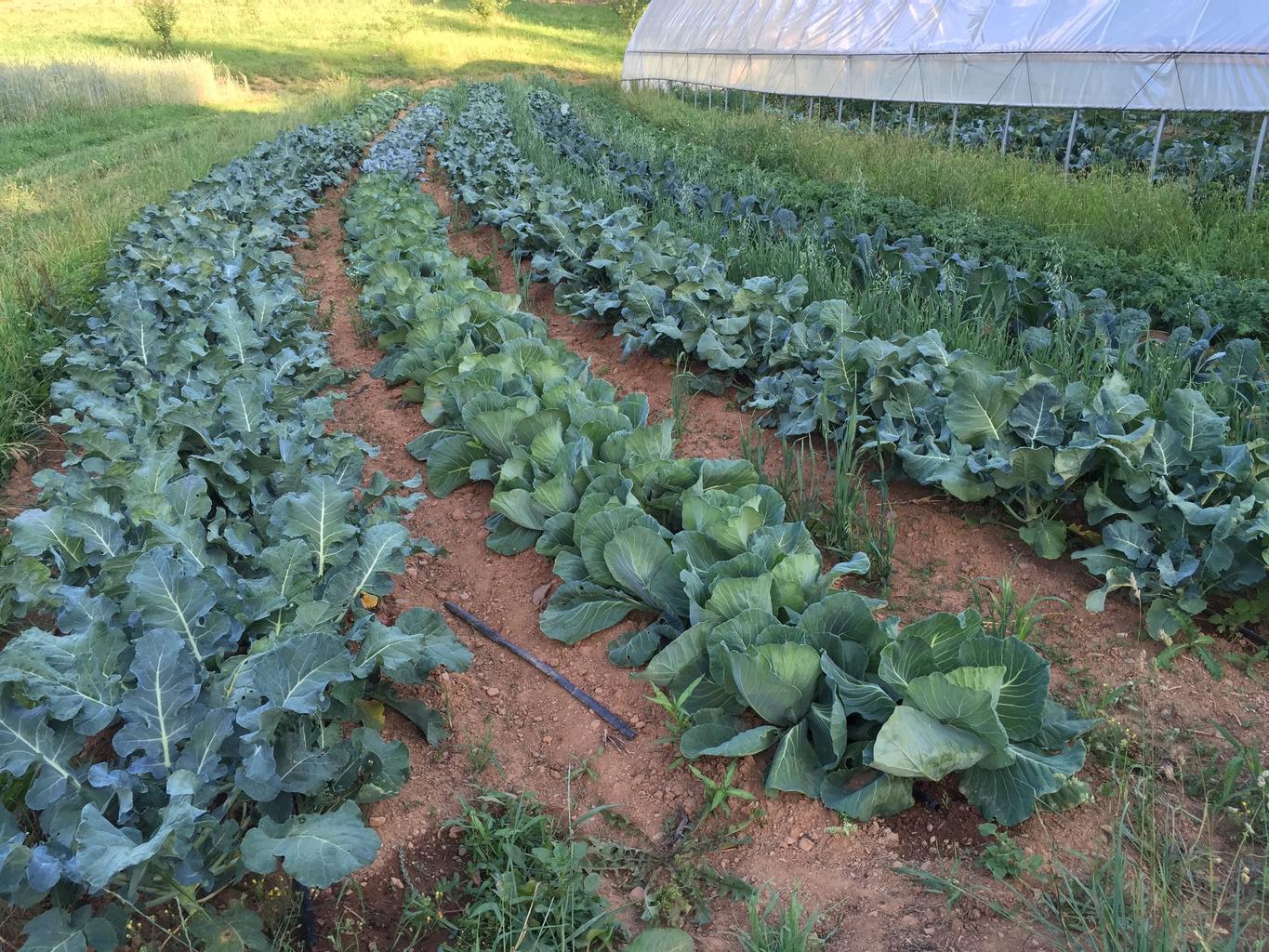


Comments